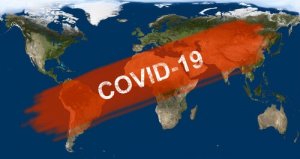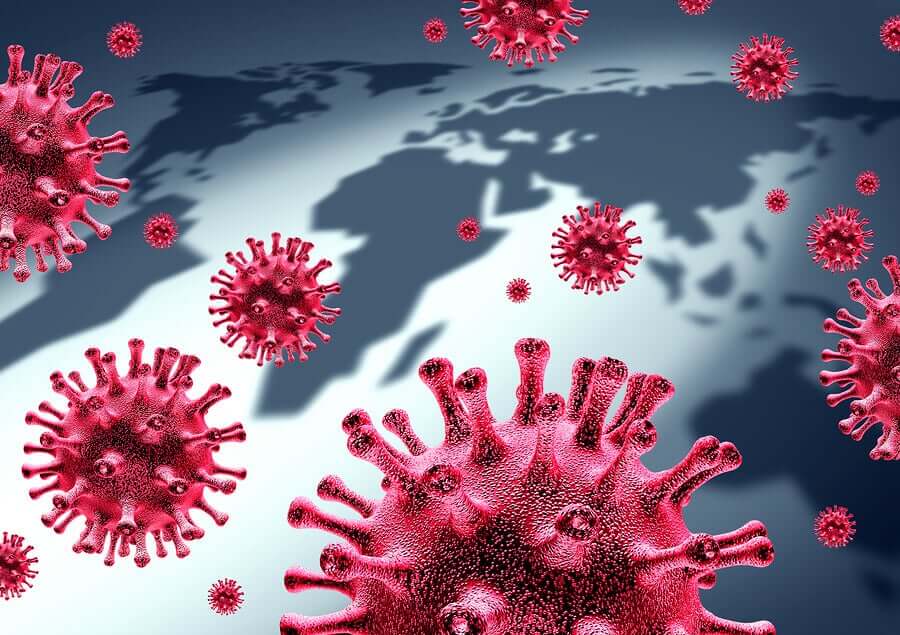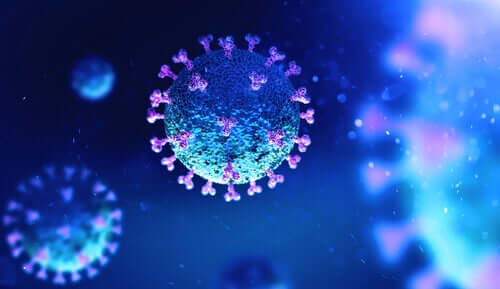The Mutation of Coronavirus Explained


Written and verified by the doctor Leonardo Biolatto
The COVID-19 pandemic continues to spread, and the first indications regarding the mutation of coronavirus have gained scientific evidence over time. Since the first article came out postulating the existence of two strains of the virus, research has been continuing in the scientific community.
According to many scientists, the mutation of the virus was to be expected. The composition of coronavirus itself explains its mutation. Because it is an RNA virus, as we’ll see below, it’s subject to a greater possibility of changing its genome due to errors in its replication.
These mutations that scientists are recording in regards to the pandemic transmission of COVID-19, do not represent the appearance of a new virus. The great mutation of coronavirus is what took place in Wuhan, China. This mutation is what allowed the virus to go from transmitting only among animals to spreading among humans.
These variations are what epidemiologists call “strains” or “lineages.” They continue to be COVID-19, but with small modifications. However, in essence, the virus maintains its characteristics. A big part of the RNA that it contains is the same as the original, but a small portion changes.
What can the coronavirus change?
The mutation of coronavirus, as we mentioned above, is possible because of the structure of the virus itself. COVID-19 is an RNA virus, which means that its genome – its genetic information – is codified in ribonucleic acid. RNA is the encryption and codification about how the virus should be. Once it enters an organism, it uses the cells of its host to multiply. It will function as a parasite, taking advantage of the cell’s structure to replicate.
One of the problems that RNA viruses have is that the system to correct errors while it replicates is deficient. Unlike DNA – deoxyribonucleic acid – which has a well-oiled detection and correction system, in RNA, the case is different.
So, when coronavirus begins to fabricate copies of itself within a cell, it makes mistakes. These errors in the RNA are what are detected as mutations in coronavirus, thus creating different strains. While these alterations don’t alter the virus’s behavior too much, we’re still talking about the same virus.

Continue reading: Prevent the Coronavirus When Shopping
What experts suspect regarding the two strains of the coronavirus
The scientists that codify the genome of COVID-19 have discovered that there are two main strains of coronavirus. They’ve named them with the letters L and S.
The L strain is what began in Wuhan in December 2019. According to the data available, it’s the more lethal strain, although it remained confined in China.
The other variety of the virus, the S strain, is less aggressive in regards to its mortality rate. However, it spreads more easily and is the strain that managed to make it out of China. In fact, there is even a theory that this strain was able to expand given its undetectability. Since diagnostic tests were developed based on the L strain, the S strain had the freedom to move about freely… leading to the current pandemic.
A delay in applying restrictive measures has also played a major role in the expansion and dissemination of the S strain. Since the identification of the new coronavirus in December 2019 until the cease of circulation in Wuhan, almost a month went by.

Disocer more: Common Myths about Coronavirus
The mutation of coronavirus by countries
In Spain, the Foundation for the Advancement of Sanitary and Biomedical Research in Valencia has gained knowledge of the RNA genome of COVID-19 present in the country. Interestingly, they’ve discovered that it differs from the genome that China published in January of this year.
The offices of Public Health in Brazil reported that the coronavirus that arrived in Latin America, producing its first case in Brazil, has 16 mutations concerning the coronavirus that came from Wuhan. Meanwhile, more news and research may continue to appear with similar results.
However, the mutation of coronavirus is a process that shouldn’t change our attitude in the face of this pandemic. The measures of security and hygiene continue to be the same as they were from the beginning. Also, quarantine rules must be followed voluntarily in some countries and are legally obligatory in others.
As an RNA virus, we can expect the constant mutation of coronavirus. Its ancestors, like the coronavirus that caused SARS, and that which caused MARS, also mutated repeatedly as they spread.
Scientific advances bring clarity
We must be thankful for the scientific advances of an era when we can communicate so quickly and efficiently. Research teams around the world can share their advances in real-time to cooperate.
The mutation of coronavirus is part of its spread. However, fortunately, we have the elements necessary for following its track. The responsible use of this information is what will help us to contain it.
All cited sources were thoroughly reviewed by our team to ensure their quality, reliability, currency, and validity. The bibliography of this article was considered reliable and of academic or scientific accuracy.
- Tang, Xiaolu, et al. “On the origin and continuing evolution of SARS-CoV-2.” National Science Review (2020).
- Bonilla-Aldana, D. Katterine, et al. “Una nueva zoonosis viral de preocupación global: COVID-19, enfermedad por coronavirus 2019.” Iatreia 33.2 (2020).
- Sahin, Ahmet Riza, et al. “2019 Novel Coronavirus (COVID-19) Outbreak: A Review of the Current Literature.” EJMO 4.1 (2020): 1-7.
- Li, Yanni, et al. “Similarities and Evolutionary Relationships of COVID-19 and Related Viruses.” arXiv preprint arXiv:2003.05580 (2020).
This text is provided for informational purposes only and does not replace consultation with a professional. If in doubt, consult your specialist.








